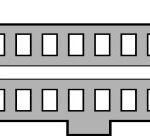It’s a common question for car enthusiasts and DIY mechanics, especially when dealing with older vehicles and considering upgrades or part swaps: “Can you switch an OBD1 sensor to OBD2?” You might be sitting on some spare parts from a newer vehicle, like an OBD2 sensor, and wondering if it’s a simple plug-and-play into your older OBD1 system. Let’s dive into the compatibility of OBD1 and OBD2 sensors and what you need to consider.
The short answer is generally no, you cannot directly switch an OBD1 sensor to an OBD2 system, or vice versa, without significant modifications and potential complications. OBD1 (On-Board Diagnostics 1) and OBD2 (On-Board Diagnostics 2) are different generations of automotive diagnostic systems, and their sensors are designed to communicate with their respective systems.
Here’s why direct swapping is usually not feasible:
- Different Communication Protocols: OBD1 and OBD2 systems use different communication protocols. OBD1 systems are manufacturer-specific and lack standardization, while OBD2 is a standardized system across the automotive industry. OBD2 sensors are designed to communicate using these standardized protocols, which OBD1 systems are not equipped to understand.
- Wiring and Connectors: The electrical connectors and wiring configurations for OBD1 and OBD2 sensors are often different. OBD2 systems typically use more standardized connectors, but even within OBD2, sensor connectors can vary. OBD1 sensors are even more diverse in their connector types. Simply put, the plugs are unlikely to match, and even if they did, the pinouts (the arrangement of wires within the connector) would likely be different.
- Sensor Technology and Specifications: While some sensors might perform similar functions (like measuring oxygen levels or temperature), the underlying technology, operating voltage, resistance, and signal output can vary significantly between OBD1 and OBD2 sensors. An OBD2 sensor might operate on a different voltage or send a signal that the OBD1 computer cannot correctly interpret, leading to inaccurate readings or no readings at all.
- Check Engine Light and System Errors: Attempting to use an incompatible sensor can trigger your vehicle’s check engine light (CEL). The engine control module (ECM) or powertrain control module (PCM) expects specific signals from its sensors. When it receives an incorrect or no signal from a mismatched sensor, it will recognize this as a fault and illuminate the CEL. In some cases, it might even lead to drivability issues.
Considering Your Specific Scenario
In your original post, you mentioned having a harness and ECM from a 1995 vehicle (likely OBD2) and considering using sensors from that system. If you are contemplating a complete engine swap or a significant wiring overhaul where you are installing the OBD2 ECM and harness into an older vehicle originally equipped with OBD1, then using the corresponding OBD2 sensors for that system is generally necessary and logical. However, this is a much more involved project than just swapping a single sensor.
Fuel Level Sensors and Other Challenges
You also brought up the fuel level sensor issue and the complexities with CJ tanks. This highlights another area where direct swaps become problematic. Fuel level sensors, oxygen sensors, and other critical engine management sensors need to be compatible with the specific ECM and fuel system of your vehicle.
Cost vs. Compatibility
While the idea of using spare parts to save costs is understandable, especially when dealing with components like O2 sensors, it’s crucial to prioritize compatibility. Trying to force incompatible sensors can lead to more headaches and expenses in the long run, including diagnostic time, potential damage to the ECM, and the need to undo modifications.
Conclusion
Directly switching OBD1 sensors to OBD2 systems is generally not recommended due to differences in communication protocols, wiring, and sensor specifications. While there might be rare exceptions or highly specific scenarios where some modifications could make certain sensors work, it’s almost always more practical and reliable to use sensors designed for your vehicle’s specific diagnostic system. If you are undertaking a larger project involving swapping entire engine management systems (ECM, harness, sensors), ensure you are using compatible components as a complete system to avoid a cascade of compatibility issues and error codes.
